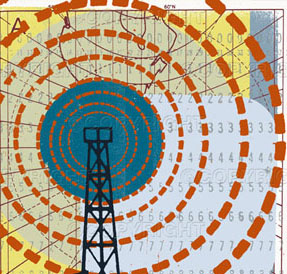We won, now what? Steps ahead for low power radio at the FCC
“When can we start our radio station?” It's the number one question we get at Prometheus these days, but there's no easy answer. If you've followed the Local Community Radio Act on its long journey to becoming law, you already know that the biggest hurdle is behind us. However, it will be months, perhaps up to a year, before the FCC can accept new applications for radio stations. To explain why, we lay out the steps ahead. (Also see: What to do in the meantime)
Signed by President Obama on January 4, the new law returns authority to the Federal Communications Commission (FCC) to allow new low power FM stations in cities. That authority was taken away by Congress in 2000, just after the FCC introduced low power radio, because commercial broadcasters complained that new stations might cause interference to existing stations. The FCC now has the authority to place low power FM (LPFM) stations much closer to existing radio stations, as long as they don't create interference for listeners. This means that for the first time, there's room for new LPFM stations even in large cities.
As the agency in charge of broadcasting and other communications technologies that use the electromagnetic spectrum, the FCC is responsible for rules on radio, but these rules must always comply with laws made by Congress. Before the FCC can accept applications for new stations, they first need to revise their rules on low power radio to comply with the new law.
 The Local Community Radio Act includes some very clear directions to the FCC, as well as some language that will need interpretation. (See our technical breakdown of the law) The FCC's rules on LPFM include technical guidelines, rules on underwriting, limits on who is eligible to apply, and rules about where (and how far apart) new stations can be located. Not all of these rules are addressed in the new law, but the FCC will likely take advantage of this opportunity to review and revise a number of outdated or ineffective rules.
The Local Community Radio Act includes some very clear directions to the FCC, as well as some language that will need interpretation. (See our technical breakdown of the law) The FCC's rules on LPFM include technical guidelines, rules on underwriting, limits on who is eligible to apply, and rules about where (and how far apart) new stations can be located. Not all of these rules are addressed in the new law, but the FCC will likely take advantage of this opportunity to review and revise a number of outdated or ineffective rules.
This process is officially called (appropriately enough) a rulemaking, and it can take months. In a rulemaking, the FCC must first publish their proposed rules and take comment from the public on these ideas. Once proposed rules are published, anyone may comment within 30 days, usually by submitting a letter through the FCC's online submission process. When the 30 days are up, the public has 15 more days to reply to those comments (all the comments get posted online). After that, the FCC considers the merits of all these comments and writes the rules.
Even before the rulemaking, the FCC must decide how to handle a backlog of applications already filed for translators, mini-stations that repeat the signals of other radio stations. Filed back in 2003, thousands of these applications have been on hold while the FCC figures out how to process them without eradicating all available spaces for new low power stations. We are working with the FCC to develop a plan that will save channels for low power stations while processing the translator applications in a timely fashion. (More on the translator situation)
Once the translator applications are resolved and the low power rules are settled, the FCC will publish a plan for the application process. Until that's released, we won't know either the timeline or the exact process that applicants will need to follow. In the first round of LPFM applications, the FCC had several licensing “windows” for different geographic regions of the U.S. The windows were only open for five days each, which means that most of the application process must be completed in advance. The new application process may or may not be similar; it's too early to tell.
Stay tuned! We will let you know when the FCC is taking public comments on the new rules and when the schedule for new applications is announced.
